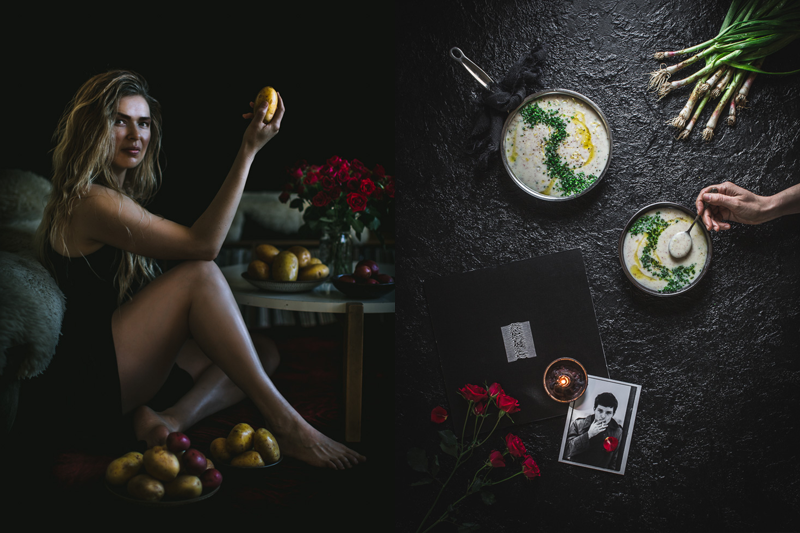
I’m not afraid anymore,
I’m not afraid anymore,
I’m not afraid anymore,
Oh, I’m not afraid anymore.
-Ian Curtis, lyric excerpt from “Insight” by Joy Division

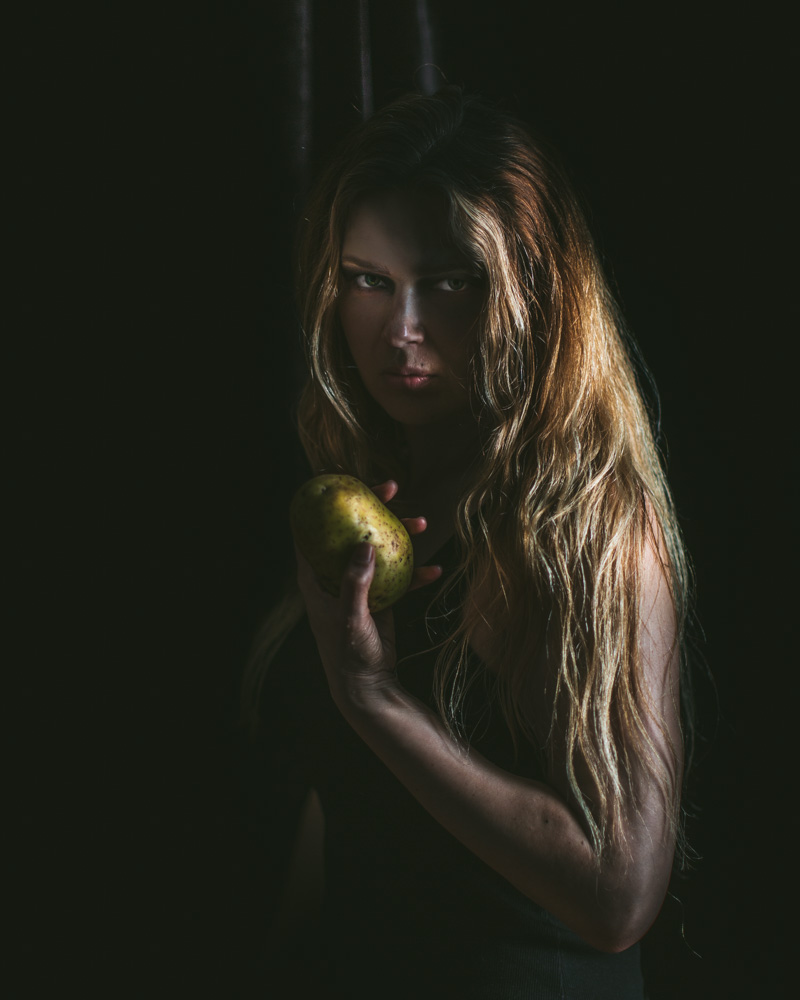
Midway through a depressive episode, I was walking to work, listening to “Insight” by Joy Division. A song I loved and had heard a thousand times before, but that morning, when I head Ian Curtis sing, “I’m not afraid anymore,” I felt a new freedom. I was stable on my meds. I would continue to be stable. I was eating solid food that had not been pre-digested in a blender, and my digestion was steady. I was occasionally watching TV after 8pm without it inducing a manic episode. I was going to be ok. The asphyxiating paranoia was lifting.
I was not afraid anymore.
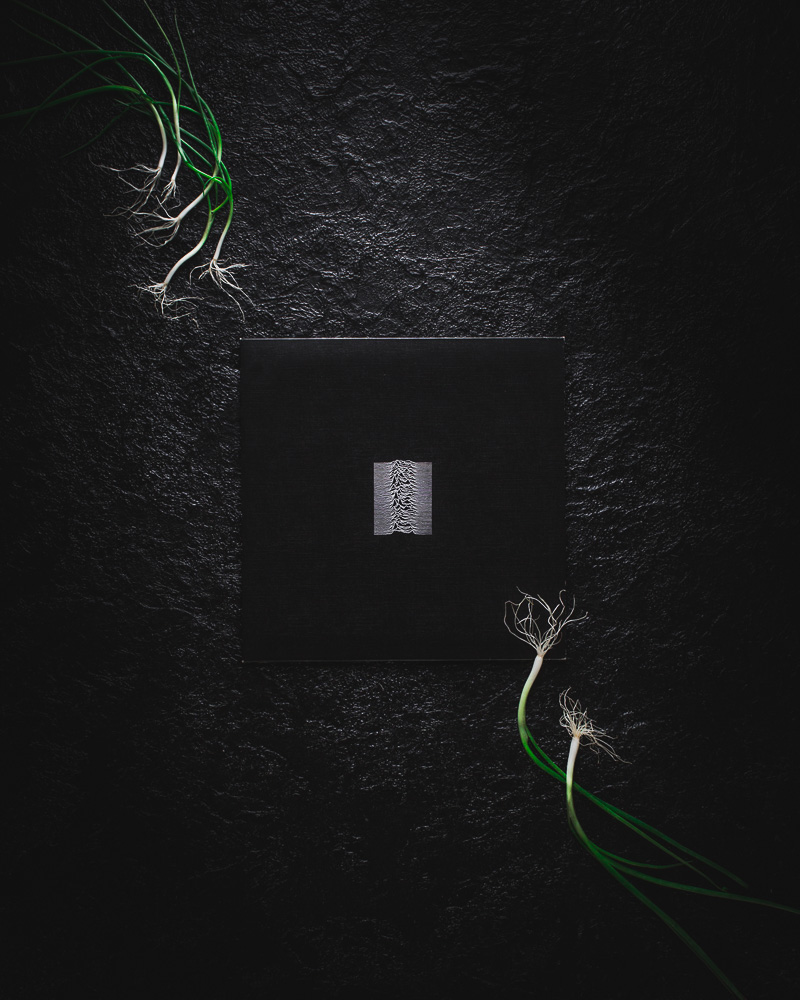
This is a story about my experience with orthorexia, and how I found my way back to eating for pleasure.
Orthorexia is a condition in which one becomes obsessed with only eating healthy food, and that obsession becomes destructive. It has been studied as a form of eating disorder, and is being considered by the American Psychiatric Association for inclusion in the Diagnostic and Statistical Manual of Mental Disorders (DSM). But since it’s not in the DSM, it can’t be officially diagnosed, which makes finding treatment difficult.
Last month, I told the story about how the influence of orthorexia led me to quit the antidepressants I’d been on for 13 years, and the mental and digestive breakdowns that followed. If you think my above admissions about the joys of regular bowel movements and watching TV after 8pm are bourgeois and laughable, read that post, and think again. If you don’t want to read it, here’s the summary: girl reads article on Goop about how antidepressants are bad, girl quits antidepressants cold turkey, girl becomes debilitatingly depressed and stops being able to poop, girl seeks out naturopath to treat her depression and digestive problems because pharmaceutical medication is “unclean,” girl’s brain is nuked by naturopathic medicine, girl is diagnosed as bipolar II and runs back to Big Pharma with open arms.
At this point in my recovery journey, I had broken up with the naturopath, and was being medically treated for bipolar II. My bipolar symptoms were getting better, but my digestion and by consequence my orthorexia was getting worse. Part of that is because my new psychiatrist forbade me to take any natural supplementation while we worked to stabilize my brain through my new meds. I was happy to comply after the hell ride that ensued courtesy of the naturopath and her adaptogens, with one exception: an Ayurvedic herbal blend she had given me to make me poop. My bowel movements were utterly barren, I saw that as a sickness, and my new meds made that sickness even worse. Without those herbs I was nothing.
Diet was now my only hope for a cure. And that is a dangerous place for an orthorexic person to be.
Although the naturopath was gone, her influence on my diet remained. At the start of our work together, she put me on an elimination diet that was supposed to last for 6 weeks. 6 weeks without gluten, grain, dairy, eggs, soy, corn, nuts, and sugar, and then gradually reintroducing each of those food types, one at a time, to see if I had a bad reaction to them.
I never reintroduced any of them.
Half a year went by, and during that time, I made the restrictions more extreme. I added to the list of forbidden foods on my own, as I continued to fall deeper into the rabbit hole of orthorexia-enabling content on the web. My naturopath’s list of restricted foods just wasn’t extreme enough. Some elimination diets cast out all legumes, not just soy. Other elimination diets cast out all seeds. Certain spices came from ground down seeds, so that meant that many spices were also off the table. I put myself on a low FODMAP diet too, even though I had none of the symptoms for which low FODMAP diets are prescribed. And I couldn’t forget about nightshades – things like tomatoes, bell peppers, aubergines, and white potatoes. The white potato has a particularly scandalous reputation in the wellness industry, criticized for having a glycemic index that is almost as high as glucose, and for its potential to carry toxic levels of glycoalkaloids. Never mind that you would have to consume about 4 pounds of nearly spoiled, green tinged potatoes to come remotely close to having toxic levels of glycoalkaloids in your system. It was a risk I could not take. Were there other things that might carry toxic levels of glycoalkaloids that I didn’t know about? How would I know what was hurting me if I couldn’t eliminate every possible threat? This incessant, anxious hum was a radio station I could not shut off.
Food pleasure was over and restriction was everything. I would not eat anything that wasn’t dark green and predigested in a blender. I threw chicken breasts into my Vitamix with bitter gourd skin and dandelion greens and puréed it down to a joyless mush. I’d bring the joyless mush to work and heat it up over a hot plate in a ceramic pot with a certified lead-free glaze that I’d brought to my office because microwaves were bad. If I was invited to a social gathering that centered around food, such as meeting at a restaurant, I’d bring that joyless mush with me in a BPA-free container and spoon it into my mouth while I watched everyone else crunch down on fries, unable to focus on the conversation because all I could think about was how much I wanted to eat those starchy white potatoes that had been shaved down thin and fried to a crisp in inflammatory vegetable oil. There had been a time when I could eat them. What had happened to me?
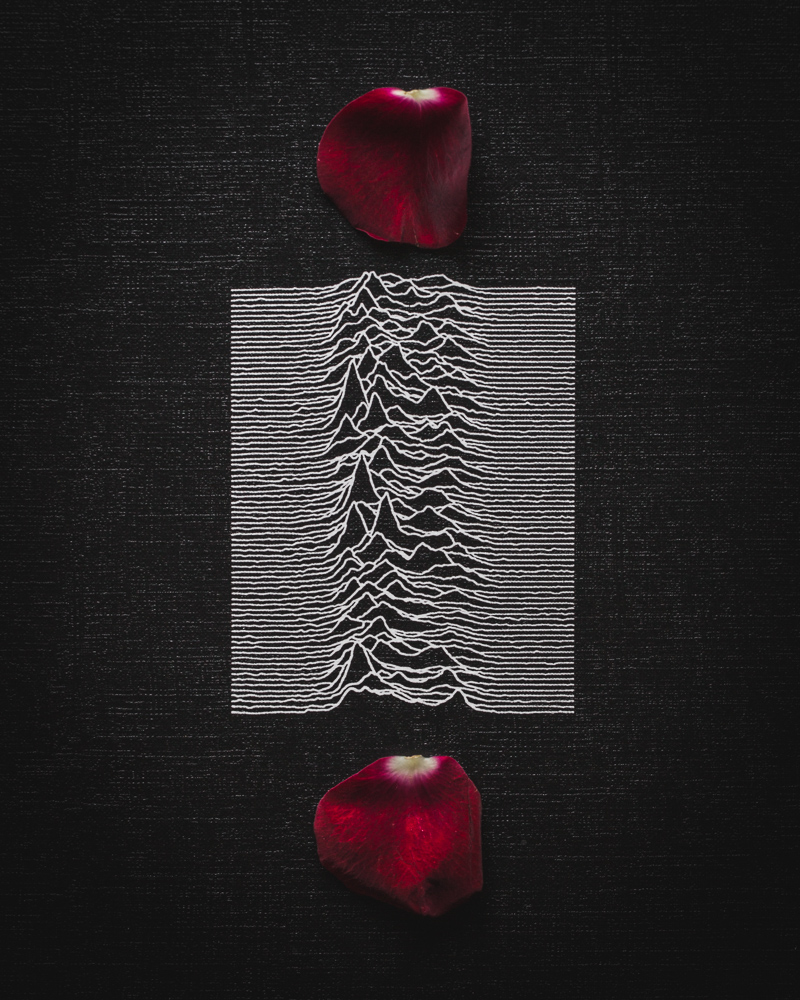
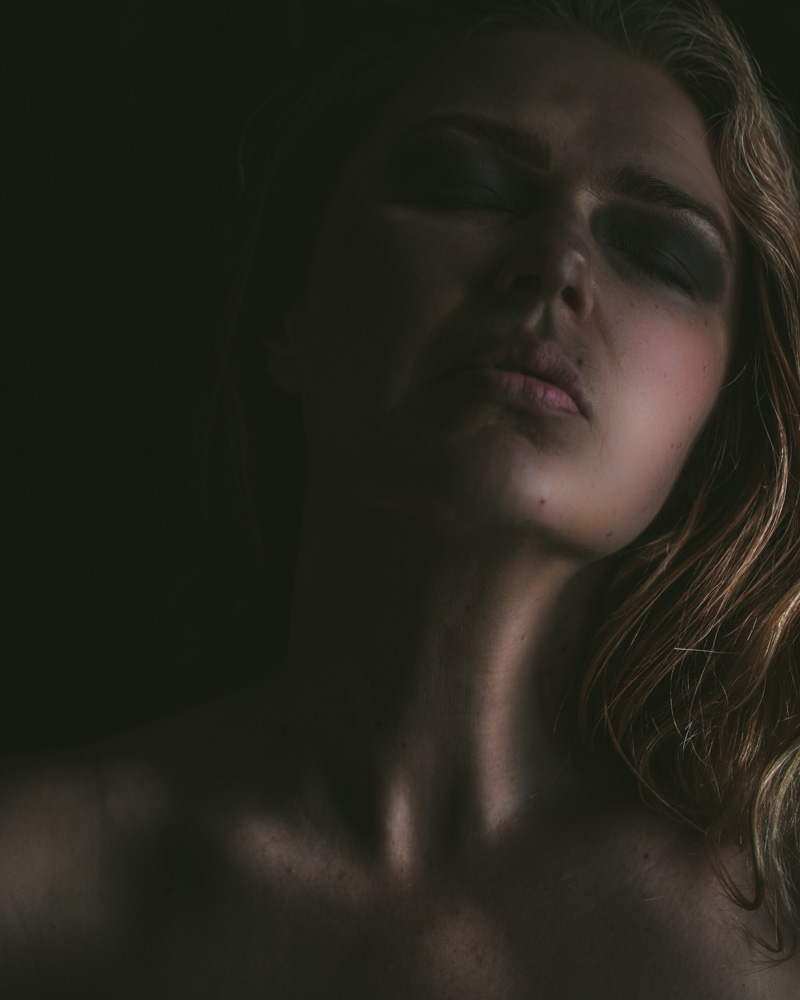
“BUT I REMEMBER . . .”
I felt a melancholy longing for the past: a happier time when things were easy, life was full of pleasure, and I was blissfully unaware of all I took for granted in terms of my health.
I was particularly haunted by the glorious food memories from the wintery Irish honeymoon my husband and I had shared only 1.5 years prior. I ate everything on that trip. Endless loaves of squishy soft, glutinous brown bread slathered with heavenly Irish cheeses each morning for breakfast. Blood puddings. Fish chowders. Scones. So much incredible Irish butter. Gluten and dairy and potatoes with virtually every meal. And I digested it. I had regular bowel movements, even while under the stress of travel. Why couldn’t I digest these things now? Moreover, why could I not digest the ultra basic, nauseatingly healthy varieties of baby food that continued to emerge from my Vitamix? I don’t know the answers to these questions. But I do wonder how much our personal happiness plays a role in our digestion. I was euphorically happy in Ireland. And I was miserable now.
Food didn’t feel safe anymore. I was convinced that I was rotting from the inside out. There were occasional periods where I would stop eating all together, for fear that whatever I took inside of me would never exit my body. I was beginning to sense that I had a problem. I looked for help. I brought up orthorexia with three different psychotherapists, and none of them had heard of it.
But my fear of food was at an all time high, and I needed someone who could give me peace, and ultimately permission to eat forbidden foods that I couldn’t give to myself.
A friend told me about a chiropractor who practiced applied kinesiology. He could determine what foods I was sensitive to by muscle strength testing me. He would ask me to hold, smell, or taste the various foods that I was afraid of, one at a time, while holding up my opposite arm, which he would apply pressure to. If my arm became weak while interacting with a particular item of food, that meant I was sensitive to it. If my arm remained strong, the food was nothing to be afraid of. It’s an alternative medicine technique, and has a reputation for being “woo-woo,” but I didn’t care. He was a doctor, I was losing my mind, and I needed someone official to tell me what was and was not ok.
I brought him approximately 93 baggies of various foods every Friday afternoon for the next 4 weeks, traveling 3 hours round trip in commute traffic. I tested OK for some foods, and not OK for others. I’m still not sure I believe in applied kinesiology, but the semi-scientific nature of the tests, and his role as an authority figure quieted my anxiety. I adjusted my diet accordingly. My digestion improved somewhat, but I was still in need of extra support.
After about 6 months of gradually tapering up my bipolar meds, I was beginning to stabilize, and my psychiatrist thought it would be safe to reintroduce the Ayurvedic herbal blend that the naturopath had given me to help me poop. None of the ingredients were psychoactive or would change the way I metabolized my medication, and it would be safe to take indefinitely.
The Ayurvedic herbs worked, just like they had before. As I began having regular bowel movements, my fear of food started to fade away. I started eating solid food again. Grains. Things with texture. Things with crunch. Some of them created digestive problems for me, and some of them didn’t.
I don’t eat certain things now by choice, because I know from experience that I feel better without them. And I eat a lot of things I had previously considered forbidden, and my digestion doesn’t break when I do. Following dietary restrictions in order to manage chronic health problems without spiraling into orthorexia is a delicate balance, but it’s a balance I think I’ve found. Part of that balance comes from accepting that diet alone will never be enough for me. My brain and digestion need extra support from drugs in order to be happy. Some of those drugs are pharmaceutical, some are herbal, and I’m okay with that.
There will always be a trendy new diet or some cool kid with a chip on their shoulder telling you that you eat the wrong way and that if you eat “their way” it will solve all your problems. Listen to your body. It knows what it needs, and it will always tell you.
I’ve found pleasure in food again. Pleasure in the well-being that comes from abstaining from certain things, while embracing others. Like starchy white potatoes laced in cream.
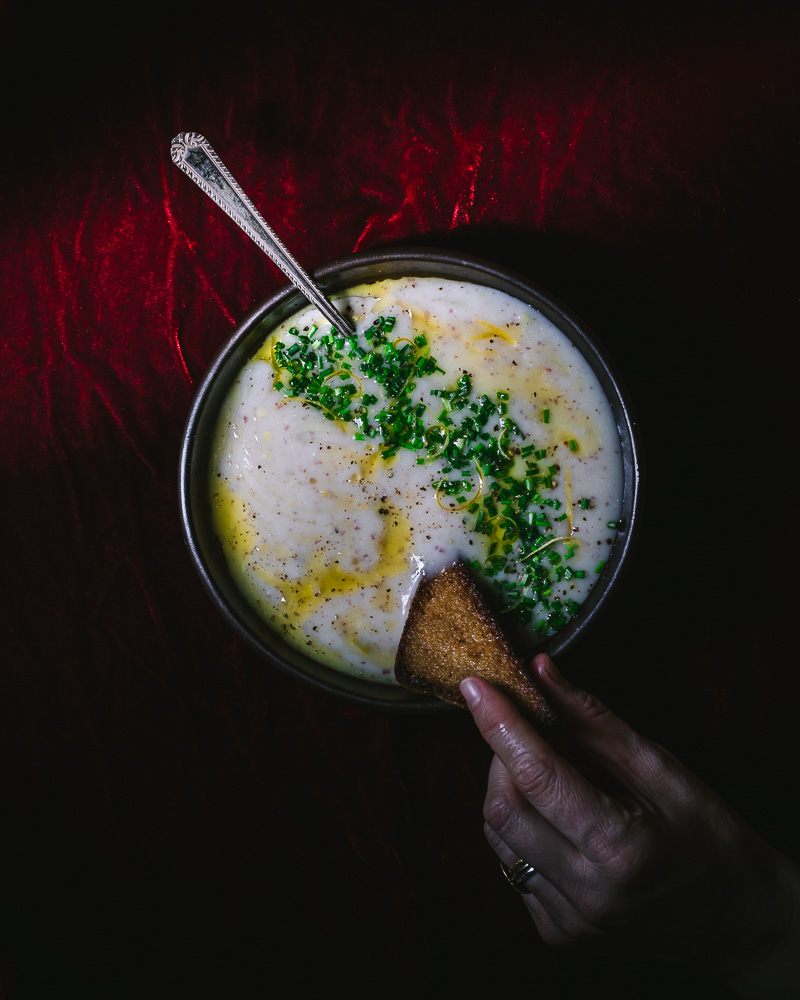
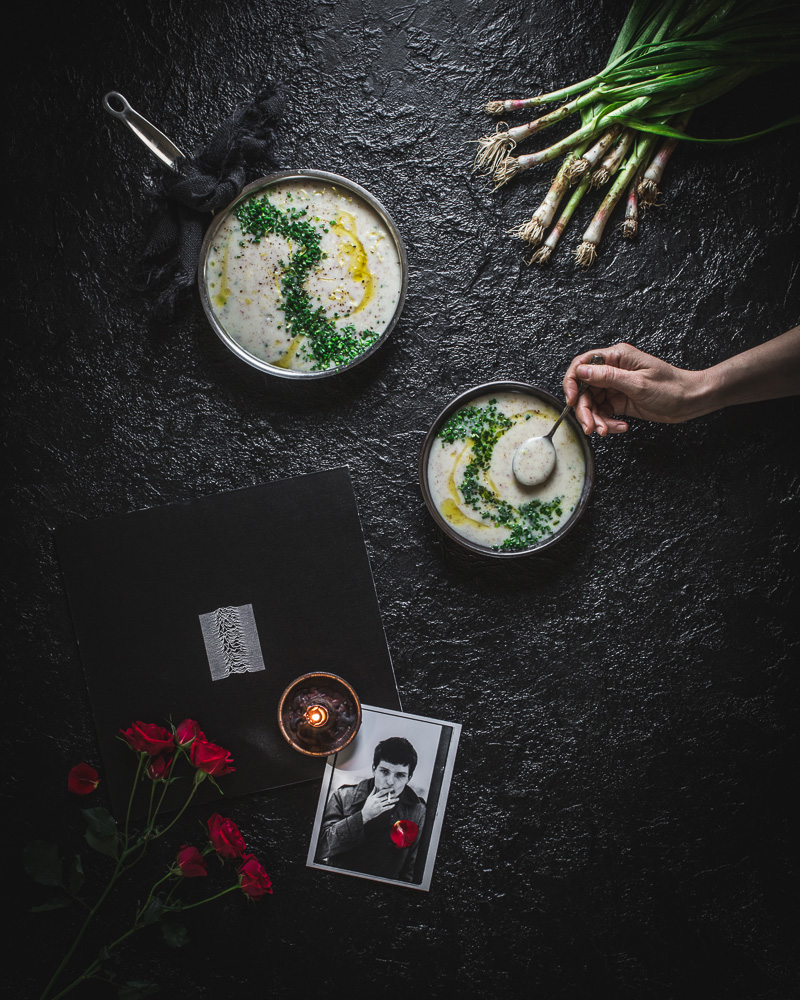
EMBRACING UNKNOWN PLEASURES
Earlier, I mentioned being haunted by food memories from the wintery Irish honeymoon my husband and I shared. One memory in particular was a lunchtime bowl of potato leek soup fetched on a roadside stop at a pub on our way from County Clare to County Kerry. It was early February, and the weather was magnificently dreadful, banshee winds and icy rain pummelling us at every turn, and that day was no exception. We parked the car, opened the doors, cried out at the shock of cold, and ran across the street while being shelled with sideways rain. The pub was warm and dark, and we sank into a table next to a glowing peat fireplace while we recovered our equilibrium. I saw potato leek soup listed on the specials board, and ordered a bowl straightaway. It arrived quickly, and as I cupped it between my icy hands, they began to warm. I raised the bowl to my mouth, inhaled its steamy vapors, and began to eat, each creamy spoonful lulling me into a blissful catatonia as I became warm from within. It wasn’t so much about the way the soup tasted as it was about the way it made me feel. The pleasure it gave me ran deep.
I wager that the cream in that soup was likely harvested from the joyous-looking cows that scatter the fluffy hillsides of County Kerry like sweet brown stars in a green night sky. And the shining star of that soup was the starchy white potato, enemy to the wellness industry, but long time best friend to my ancestors. Potatoes are the food of my people. I’m 62% English, 19% Celtic. When my husband and I were visiting Ireland, it wasn’t uncommon for three different potato dishes to be served with a meal. Potatoes are a good source of vitamin C, vitamin B6, potassium and manganese, as well as antioxidants like flavonoids, carotenoids, and phenolic acids.
Dairy and white potatoes have been a significant part of the dietary backbone of my ancestors for centuries, and I am reclaiming them.
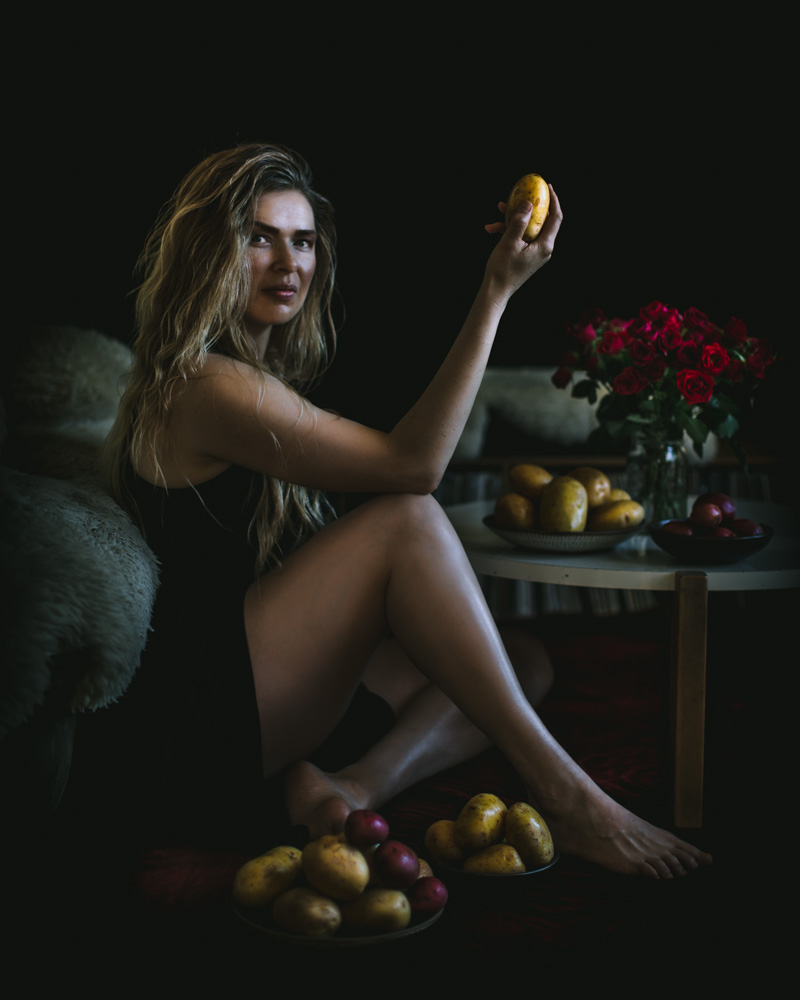
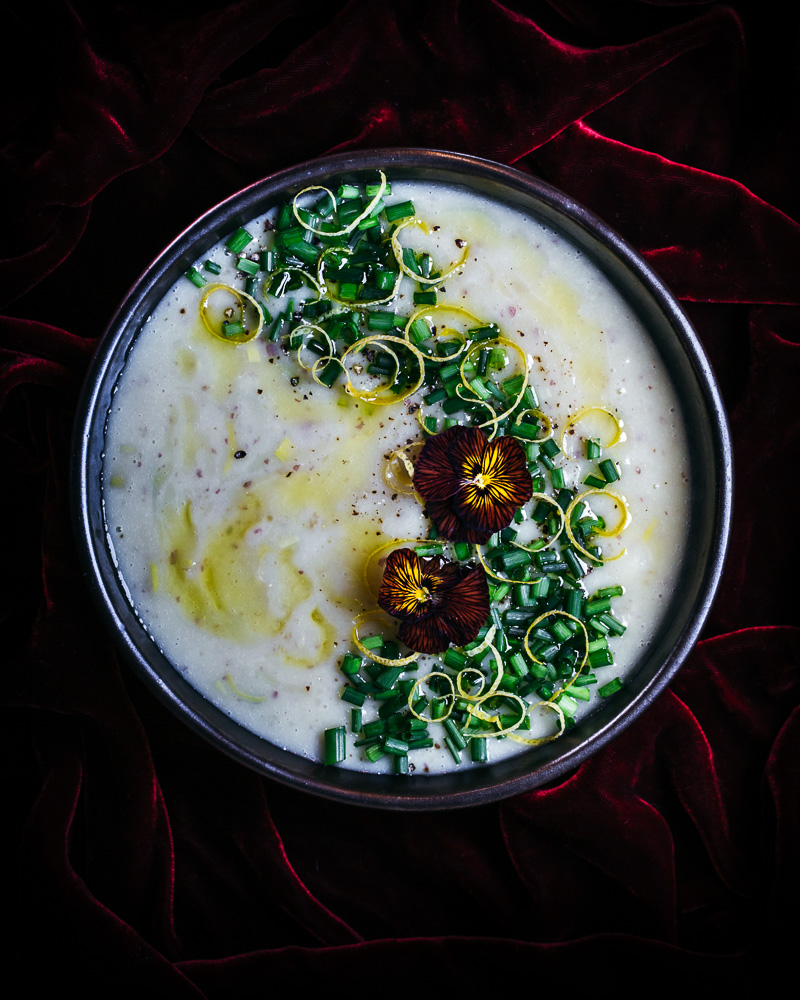
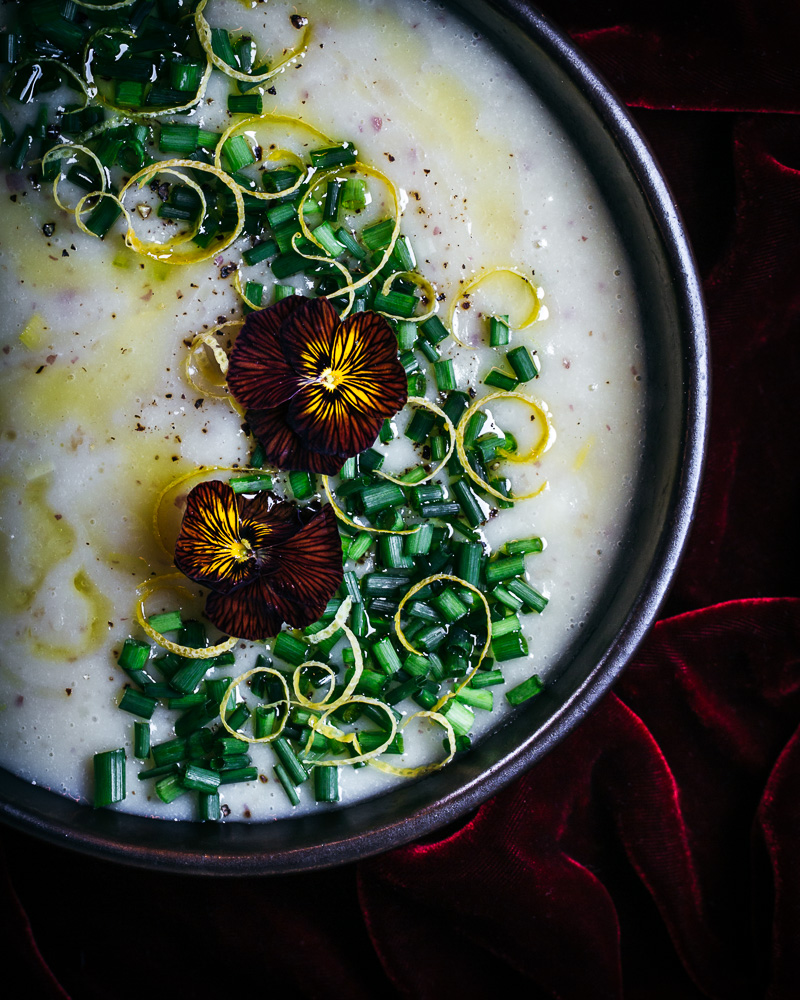
RECIPE: BAY LEAF INFUSED POTATO LEEK SOUP WITH LEMON ZEST AND FRESH CHIVES
My recipe for potato leek soup is a little lighter than that enchanted bowl I had in Ireland. Most potato leek soup recipes call for a lot of cream and are so heavy that the flavor of the potato is often lost. But I like the flavor of the potato to come through, so I use half and half instead of cream, and a lower ratio of dairy to potatoes than most recipes call for. I simmer the potatoes with bay leaves to add some dimension, and fold in the leeks at the very end to preserve their subtle flavor. I garnish with minced chives, lemon zest, and a sharp olive oil to give it some tang and brightness. Serve it with a simple green salad and a hunk of crusty bread to round out the meal.
RECIPE NOTES
Make sure your bay leaves aren’t too old – if they’ve been sitting in your spice cabinet for over a year they won’t contribute much. Fresh bay leaves are also great to use if you have them around.
Adjust the amount of salt to your liking. You may require more or less salt depending on what kind of store bought stock you use, as the amount of sodium in store bought stocks can vary.
Prep time: 15 minutes
Cook time: 40 minutes
Servings: 3-4
INGREDIENTS
1 tbsp olive oil
1 medium white onion, finely chopped
1 garlic clove, finely chopped
30 oz (840 g) red potatoes diced, skins left on
1 quart (.946 liter) store bought stock
2 bay leaves
¼ tsp pink Himalyan salt
1 large leek, white and light green parts only, cut into thin rings
½ cup (118 mL) half and half
1 handful chives
Zest of 1 lemon
Finishing salt and pepper to taste
INSTRUCTIONS
Sauté onions and garlic over low heat in a medium saucepan for 10 minutes, or until sweaty and fragrant.
Add diced potatoes, bay leaves, and chicken stock, bring to a gentle simmer, and continue to simmer until potatoes are nice and soft (about 20 minutes).
Remove bay leaves, but don’t throw them away. Transfer the remaining contents to a blender, add salt, and blend for a few seconds – you don’t want it too smooth. A bit of rustic texture is nice.
Pour the blended soup back into the pot, and fold in the sliced leeks. Return the bay leaves to the pot, being careful not to break them when you stir. Bring the soup back to a gentle simmer over low heat, and simmer until leeks are tender but still bright green (3-5 minutes). Stir in half and half, cover, remove from heat, and if time permits, let it sit for 20 minutes before serving – it lets the flavors come together more beautifully. If you don’t have time for that, remove the bay leaves, and serve, garnishing with chopped chives, lemon zest, and a few arty streaks of olive oil. Add salt and pepper to taste.

THANK YOU, IAN, THANK YOU, JOY DIVISION
Part of this story and recipe is about me reflecting on something that happened that shaped who I am today, and sharing that in the hope that it will help others. But it’s also my way of paying respect to an artist whose music and words have enriched my life. I think the lyrics to “Insight” brilliantly articulate the dissolution of hope, the coldness of chronic disappointment, and are likely about Ian Curtis giving up on life and preparing for death. But great art often has both an intended meaning and an ability to transform into something else. Something that can become intensely personal and imbued with specific meaning unique to the individual, providing catharsis, companionship, solidarity, and comfort. “Insight” held my hand with love as I let go of the bullshit that was keeping me down.
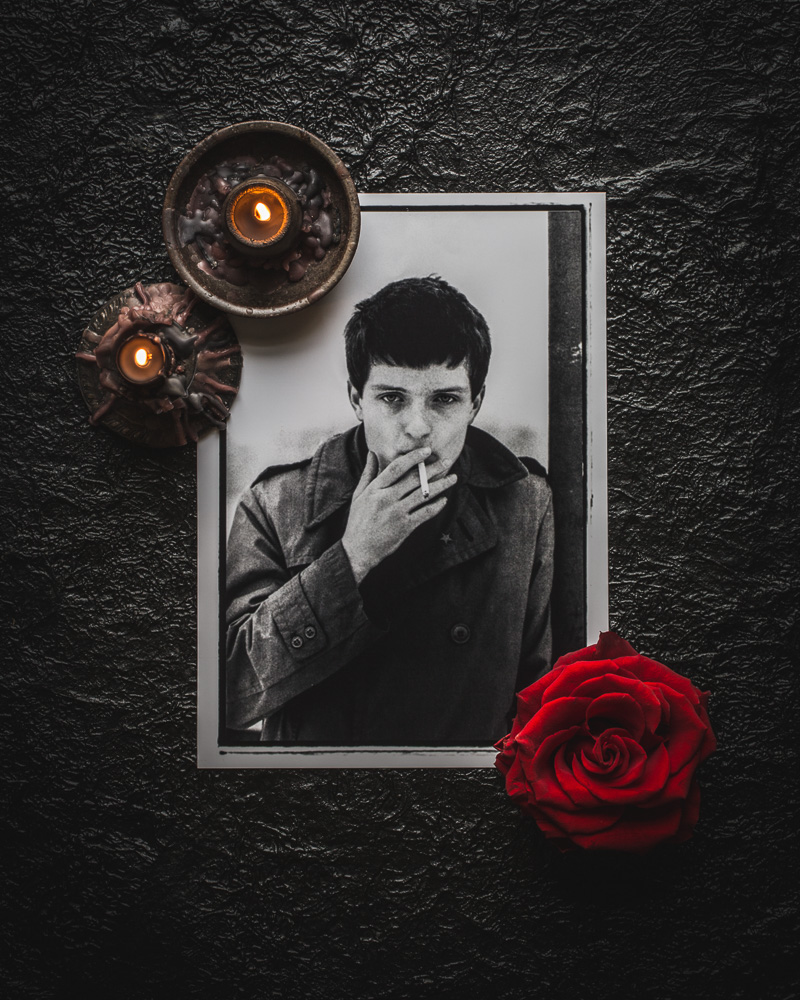



beautiful post, as always. Loved the part about the cool kid saying your problems will be gone if you ate their way. I had that cool kid in my life for many a year: it was my own brain. And for a long time, it told me to eat only an apple and a glass of milk a day.